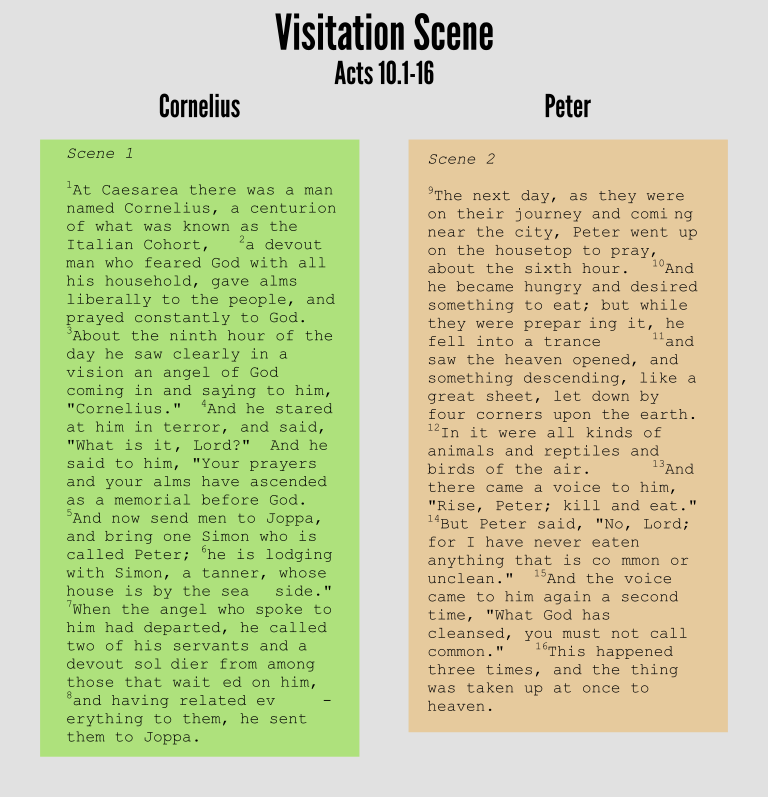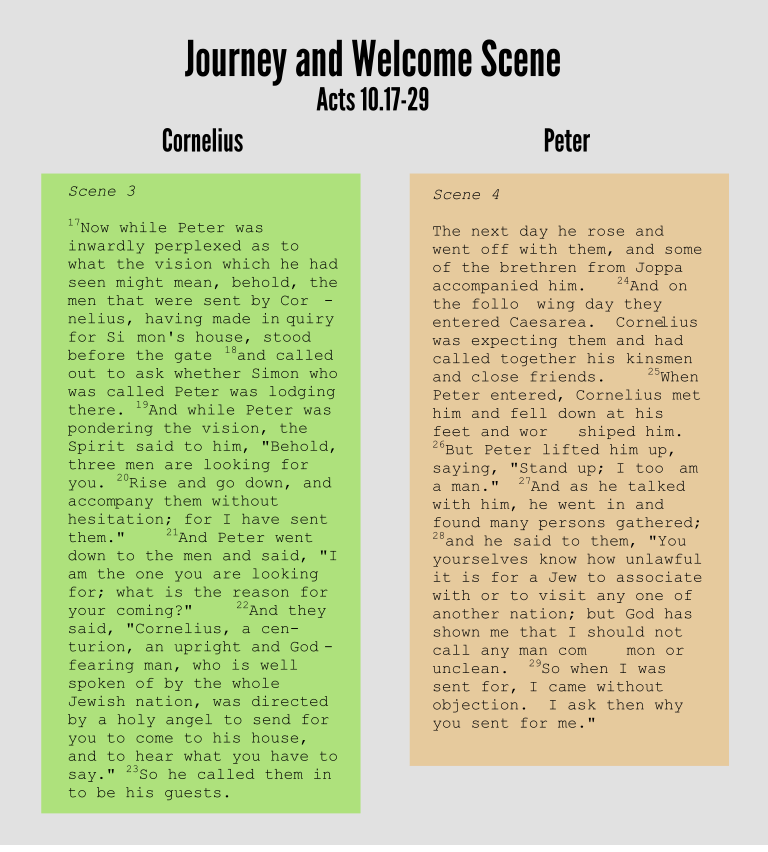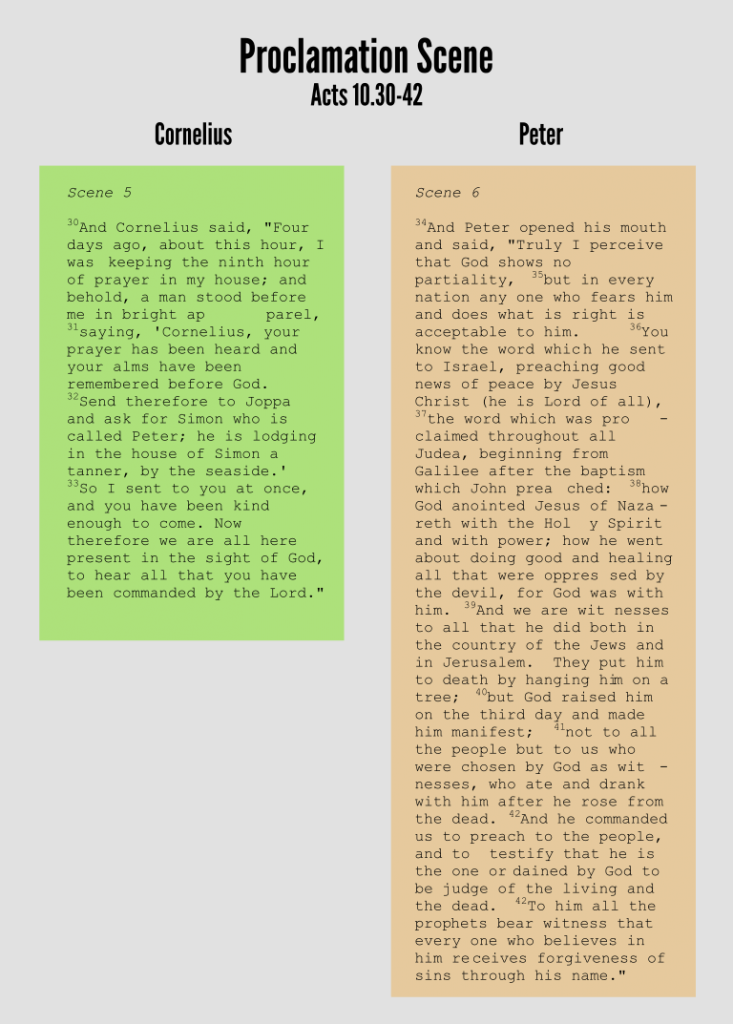Class 5: Luke-Acts’ Vision of the Unity of Humankind
The Class
What We’ve Learned So Far
| 1 | Humanity is a single entity. God’s creation and redemption are given for all persons and nations. Divisions within the human family are incidental and usually the result of human unfaithfulness. |
| 2 | Abraham’s family and posterity possesses the vocation of being a blessing for all families. At the zenith of its self-understanding, Israel saw itself as the host for all peoples’ coming to God |
| 3 | Christian faith energizes Israel’s vision of ingathering by spreading out throughout the world to call all of humanity into Abraham’s blessing under the lordship of Jesus Christ. Among the Gospels, this vision is most prominent in Luke-Acts. |
| 4 | |
| 5 | The Book of Revelation has powerful images of the ingathering of all people. For example a fourfold formula (tribe, language, people, and nation) occurs throughout Revelation, playing an important role in the book. It occurs seven times (5: 9, 7: 9, 10: 11, 11: 9, 13: 7, 14: 6, 17: 15), |
Luke-Acts’ Vision of the In-gathering of all Peoples




CORNELIUS AND PETER
Exegetical Notes for Acts 10
1. Context
As the story of Acts unfolds, the advance of the Gospel overcomes a variety of barriers, first from the Jewish community, then from Jews within the Christian community, and ultimately from Gentiles. The transforming work of the Holy Spirit overcomes these obstacles in succession, first by reversing Saul’s persecution and, by the eleventh chapter, overcoming Jewish-Christian resistance to welcoming Gentiles into Christian fellowship. Cornelius’ conversion is the decisive story of God’s defeat of this particular barrier. It follows stories of successful missionizing among Jews and precedes the outbreak of persecution by Gentiles.
2. Structure:
Unlike the first two studies, I have adopted Beverly Gaventa’s scene divisions without modification. These are:
Scene I 10.1-8
Scene II 10.9-16
Scene III 10.17-23a
Scene IV 10.23b-29
Scene V 10.30-33
Scene VI 10.34-43
Scene VII 10.44-48
Scene VIII 11.1-18[i]
The first two scenes parallel each other in that they are both revelations, one to Cornelius and one to Peter. This establishes a pattern in which the narrative’s focus alternates between Peter and Cornelius. This in turn awakens the reader to the insight that both Cornelius and Peter are undergoing transformation. For this reason it would be helpful for students to have sheets which present the scenes in discrete blocks of text which are numbered.
3. Comment
Scene I
In reviewing this portion of the text, the class should notice Cornelius’ status as one outside Israel’s covenant. As a soldier he could not observe the Torah. Cornelius, however, is a devout man. His reception of the angel’s message bears a hint of Mary’s receptivity and consent to Gabriel’s annunciation.
The details of Peter’s host–Simon the Tanner–are the first in a series of references to houses and hospitality which thread their way through all eight scenes in this story. Hospitality is close to the essence of what Cornelius’ conversion is about.
Scene II
Peter’s vision is in some ways comparable to that of Cornelius. Peter’s resistance and misunderstanding is faintly reminiscent of Zechariah’s resistance to the angel in the Temple. This evokes a familiar biblical theme where those inside the faith community display more doubt, misunderstanding, or resistance than some outside. Also, the theme of clean and unclean animals relates to a deeper theme in this portion of Acts, namely the Church’s dawning realization of the abrogation of Jewish purity laws.
Scene III
The revelation to Peter continues in this scene not through another vision, but through the timely (providential) arrival of Cornelius’ messengers accompanied by the Spirit’s command to Peter. It is worth noting at this point that obedience to specific commands is often an element in Lukan conversions. Students should notice also that Peter becomes the host of the messengers at the scene’s end.
Scene IV
Two elements in this scene require comment. First, Cornelius falls to Peter’s feet, an act of obeisance reminiscent of Peter’s initial response to Jesus (Luke 5.8). Also, Luke mentions Peter’s entrance into Cornelius’ house twice. Again, the accent is on hospitality.
Scene V
This is Cornelius’ recapitulation of his vision in Scene I. The act of a Gentile sharing with Jews stories of revelations–especially when they resemble revelations familiar to Jewish Christians (Luke 24.4 and Acts 1.10)–brings the reader to the heart of the author’s aim in these eight scenes. The Jewish Christian Church is discovering that Gentiles have had experiences with God that compare with their own. The continual rehearsal of revelation stories, (10.22, 10.28, 10.30-32, 10.34-43, 11.4-17), which may strike the reader as tiresome or repetitious, in fact is what brings about the transformation of all parties.
Upon hearing Cornelius’ testimony, Peter’s attitude towards Gentiles is transformed: “Truly I perceive that God shows no partiality…” (10.34). Something similar happens later when the Holy Spirit falls upon the Gentile hearers of Peter’s preaching. Says Peter, “Can anyone forbid…” These words ironically echo the Eunuch’s question in a previous chapter. However, in that story, the Eunuch was the convert rather than the representative of the Church. The culmination of this theme is played out in Jerusalem when Peter recites the whole story (11.1-18).
Scene VI
As for Cornelius, he and his household is transformed at the hearing of Peter’s witness (11.34ff). The material in Peter’s speech is, by this time, familiar to the reader of Acts and constitutes a typical recital of the course of Jesus’ ministry. Gaventa cites evidence that this recital has been tailored in minor ways to accent the fact that the Gospel is for all peoples.[ii]
Scenes VII
The arrival of the Holy Spirit, interrupting Peter’s speech is the decisive moment of transformation both for Cornelius and company, and, as the reader will later learn, for the Jewish Christian community as well (11.17-18).
Taken in its entirety, this lengthy narrative holds much promise for understanding Luke’s vision for reaching out to all sorts of people. For instance, many of the usual elements associated with Christian conversions are not present in this story. Cornelius does not seem to change religions or acknowledge a new doctrine. Neither does he renounce a former life of sin or receive a call to new vocation. (Curiously, Peter’s transformation does entail some of these elements.) What is new for Cornelius in this episode is the experience of fellowship with the Church, the hearing of the Word from a representative of the Church, a filling with the Holy Spirit, and water baptism administered by a representative of the Church. Experiencing the welcome of the community is close to the essence here.
Paralleling this is Cornelius’ invitation for Peter to remain as a guest for several days. As the church embraces peoples beyond the orbit of Judaism, so does Cornelius embrace Peter as a guest in his house. Says Gaventa about verse 48b:
Consistent with the entire narrative, this request suggests that the inclusion of Gentiles does not have to do merely with a grudging admission to the circle of the baptized. Including Gentiles means receiving them, entering their homes, and accepting hospitality in those homes.[iii]
[i]. Gaventa, From Darkness to Light, p. 111-112.
[ii]. Gaventa, From Darkness to Light, p. 117-119.
[iii]. Gaventa, From Darkness to Light, p. 120.
